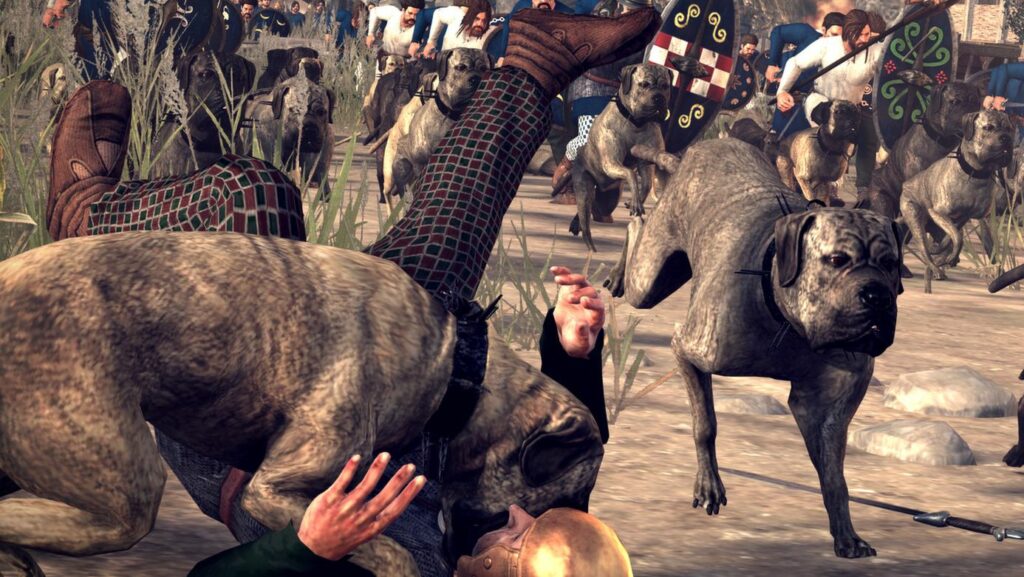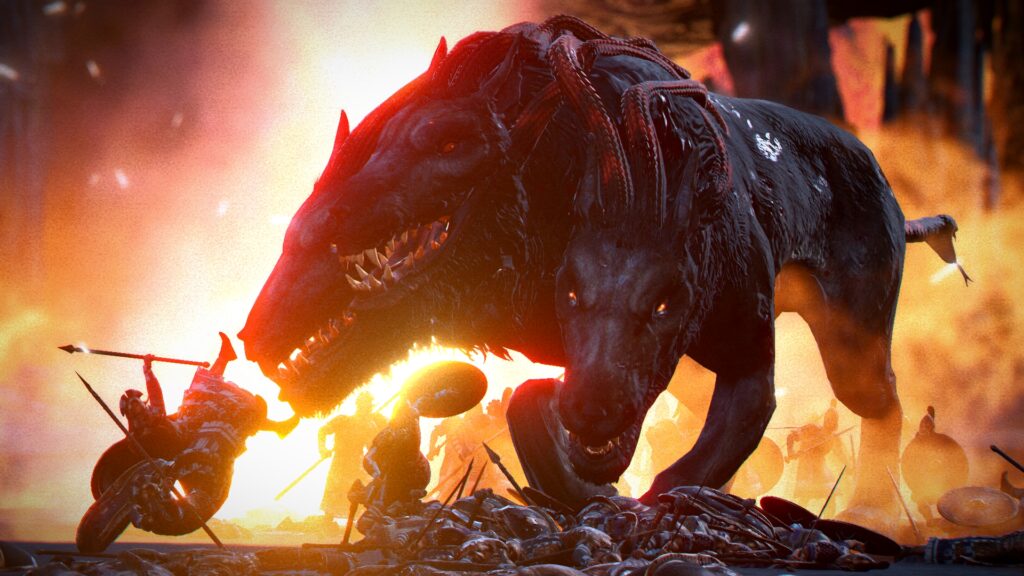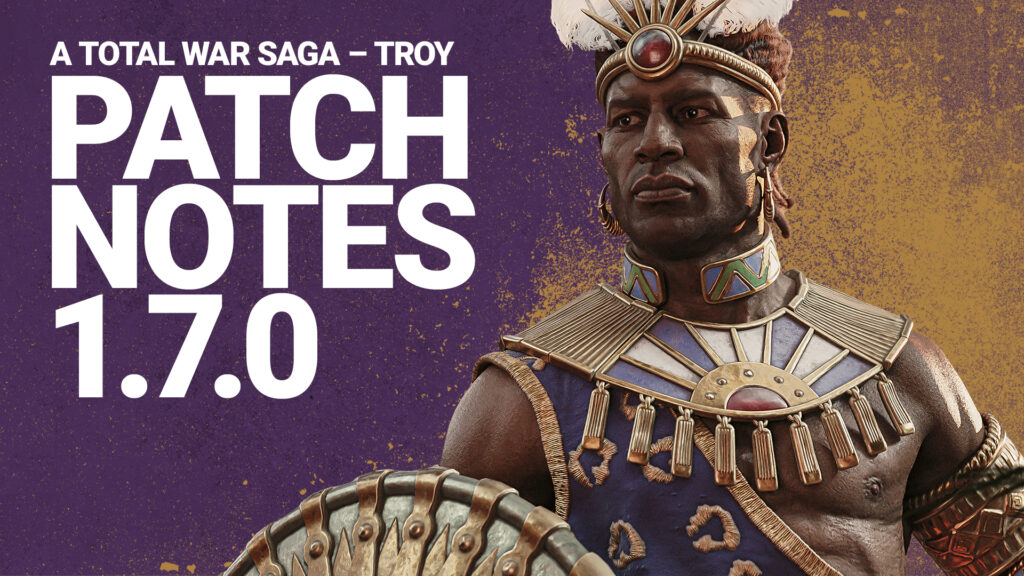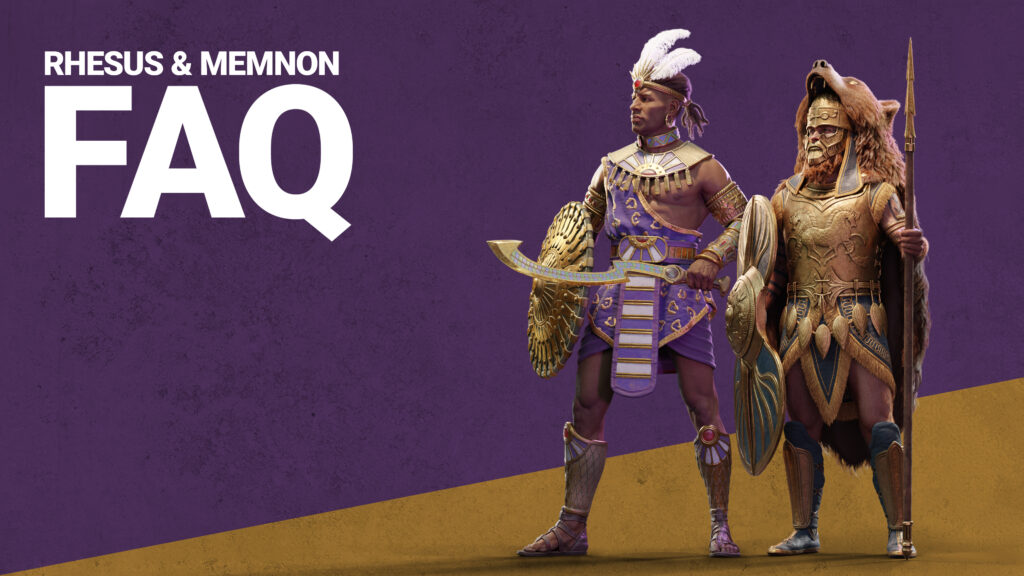
Cry havoc – a look at the dogs of TOTAL WAR and a history of puppers in combat
Cerberus is here, but it’s hardly the first (or last) ancient war dog. Indeed, some of them were even real. In a departure from our standard TotalWar.com fare of roster reveals and info drops on MYTHOS, today we offer a look at the history of canine warfare, both in our games and out there in the big wide world.
The use of man’s best friend in warfare to make sure they are very much not the other man’s best friend is hardly new. While theories stretch back as far as 4,000 BC for the use of dogs as weapons of war, intimidation, or general harm, the most commonly referenced first major battle was between the Kingdom of Lydia – modern-day western Turkey in Asia Minor, not to be confused with Lycia – and the nomadic peoples of the Cimmerians.
Lydia had long suffered at the hands of the Cimmerians, who had invaded, sacked, and occupied the capital of Sardis over a period of ten years. One king had fallen at their hands, Gyges, and three more would continue that war, until Alyattes. Better known as the father of currency and coins (which helped his son become one of the wealthiest men of the Ancient World and a myth in his own right), Alyattes was the second-last King of Lydia before it fell to the first Persian empire.
In his conclusive battles against the Cimmerians, Alyattes supposedly made use of war dogs to disrupt enemy formations, giving his armies the upper hand. While it was the first recorded, this would become the standard use of dogs in war for upwards of the next two thousand years. Until the invention of firearms, a large dog with razor-sharp teeth was as deadly as any human, and likely quicker, more agile, and – unfortunately for our furry friends – less valuable. The Cimmerians were driven from Lydia and their defeat is the last they’re heard from in history.*
Dogs were also notable in ancient times for their ability to harass cavalry by unnerving and attacking horses. However, one account that is referenced heavily is that of the Ephesians (a city-state near Lydia) using cavalry units that combined three parts – a man on a horse, a spearman, and a war dog. The dogs would go in first, confusing and disrupting the enemy for the initial spearmen attack. The enemy now locked in place and vulnerable, as well as still dealing with scurrying dogs biting at their heels, the cavalry would hit with full impact. Rather sounds like something out of TOTAL WAR, doesn’t it?

Speaking of which, we reach the era of our first in-game featuring of war dogs with the Romans, as ROME: Total War (REMASTERED or otherwise) featured the warhound unit. It is effectively fast-moving light infantry, without the power to beat through heavy armour. We wouldn’t recommend an entire army of them, but as an alternative or supplement to cavalry, they can be very useful. This comes both in terms of chasing down already wounded enemies or softening them up for a charge by infantry. They are naturally scary to fight in battle, and quick to move through the trees and snow alike.
The real-world usage of Roman war dogs was much the same as anywhere else in the ancient world, even some 500+ years after their first recorded engagement. Indeed, it was a breed known as Molossian Hounds that were most common within the armies of Rome, though everything beyond watchdog status is disputed and debated, as much is. The more extreme end suggests the Romans would set dogs on fire and have them charge enemy cavalry. There is also evidence of the same breed being used for fights in the arena, against other animals or men. Bit grim.
The Romans also fought hounds in their various conquests – most notably during Caeser’s invasion of Britain, the Celts used war dogs native to the isles to oppose the invaders. They weren’t the only ones, hence why the Gauls, Germans, Dacians, and various others have access to Warhounds in ROME and ROME II.
Not long later – in either our game release timeline or real-world history – comes Attila. As part of his incredible series of campaigns, Molossian Hounds were also part of his forces. Much like the Romans, their primary role was as guards for camps, their legendary size and ferocity serving well to stop anyone getting in (or out). It is impressive that this one breed, across one thousand years of military history from Alexander to Attila (if you are to believe Alexander is the origin of the hounds, which is, you guessed it, disputed), has had such an impact.
In Total War: ATTILA, the Norse factions have access to the Warhounds unit, similar to what was present in ROME II. It brings a superior burst of speed and is effective against infantry and other light units. They’re relatively weak and can’t take much of an assault themselves, but they’re as effective as they ever were at disrupting formations and hunting down stragglers.
From this point in history the popularity of war dogs begins to dip. Heavier armour, more organised militaries, better weaponry – pick your poison for why this might be. They are still in circulation, particularly as wards for camps or guardians for nobles, but an organised unit of dogs was less common. THRONES OF BRITANNIA is our latest game – timeline- and release-wise – to feature the pups of war. It is most common among the Welsh factions, and again serves as a fast-moving unit that can put out some quick damage. Dogs gained the berserk trait in this game, making them more fire-and-forget but less likely to survive the battle.
The general theme for ancient and dark age dog warfare was an unholy size, one which has since gone extinct. Whether this is partly down to the fear and propaganda of the writers of the time or other reasons is unknown. However, it is generally agreed that modern descendants – mastiffs and German Shepards – are small in comparison.
Of course, it wasn’t the end of the road. Spanish Conquistadors used dogs in their invasion and subjugation of America, proving effective at hunting in the dense jungles. As we approach modern times, both World Wars had major involvement from our four-legged friends. They were mostly reduced to roles of message-carrying, moral-support, and companionship, not being able to hold a rifle in their paws. Experimental programs to have them combat tanks, leave bombs, or other applications have never gone well. Command & Conquer or The Phantom Pain, reality is not.
The issue, at least according to semi-recent research, is that humans have accidentally caused dogs to become friendly to survive. Being a giant, terrifying animal proved rather costly once humans developed fire, spears, and so on, so dogs have slowly become much friendlier. Thus, teaching them the ways of war, particularly surrounded by gunfire, explosions, and the like, is a much harder task than it once was.

Which brings us to the end of our journey through history on the furry backs of hounds. Who knows where dogs might show up in our future games? For now, Cerberus is three for the price of one – quite the deal – and we really hope he’s even bigger than the Molossian hounds of old.
*As always, with any account of history from before the invention of the printing press, much could, will, and provably has been lost between barbarian invasions, fall of civilizations, colonialism, and general passage of time. After the printing press, of course, we simply have to determine who is lying and who is not.



